Table of contents
Raw coconut milk is made from the flesh of the coconut ( Cocos nucifera). Coconut milk is not the coconut water in the coconut. You have to make raw coconut milk yourself, as it is rarely available to buy.
Use in the kitchen
Coconut milk enriches both sweet and savory dishes with its exotic, sweet, nutty taste. In Asian countries, the Caribbean and tropical regions, coconut milk has been very popular in numerous dishes for centuries. It is used for soups, sauces, curries and vegetable dishes. Coconut milk should not be cooked for too long, otherwise it will curdle. It can be simmered gently on a low heat or added at the end of the dish. Coconut milk can also be used for desserts such as vanilla coconut cream, chocolate mousse, ice cream (glace) or for baking. For cocktails such as Piña Colada or Batida de Côco, however, coconut cream or cream of coconut is used.
Raw coconut milk is great for shakes, fruit or vegetable smoothies and muesli. Many vegans and lactose intolerant people use coconut milk as a cream and milk substitute. However, due to the high fat content of coconut milk, it is better to use oat milk, soy milk, rice milk, hazelnut milk or almond milk.
Canned coconut milk can be found in stores, often packaged in cans or tetra packs. Raw coconut milk is usually made from coconut flesh.
Making your own raw coconut milk
Coconut milk is particularly fresh when you make it yourself from fresh coconut flesh. You can use the coconut water to make the coconut milk. To do this, use a screwdriver to open two of the three eyes (dimples on one side of the coconut). Now hold the coconut over a container so that the coconut water can flow out of one of the two open eyes. The other open eye should point upwards, as it serves as an air hole. As soon as the nut is empty, place it on a firm surface and hit the belly of the coconut firmly with a hammer. Repeat this several times along the axis until the coconut bursts open or can be broken open by hand. Now you can use a kitchen knife to cut out the tasty coconut flesh. Put the coconut flesh and coconut water in a blender and puree until you have a homogeneous mass. You either pass this through a sieve (or a strainer cloth or cotton kitchen towel) and squeeze as much liquid as possible out of the coconut pulp. The pulp that remains can be used in muesli, cakes or biscuits.
Alternatively, you can also make coconut milk from raw coconut chips or coconut flakes. You can find the recipe under the link to the ingredient coconut milk, preserved.
Vegan recipe for an exotic coconut smoothie
Ingredients (for 4 people): 1 papaya, 1 mango, 2 limes, 400 ml coconut milk, 400 ml orange juice.
Preparation: Peel the mango and papaya, remove the stones and cut the flesh into large pieces. Grate the lime peel with a fine grater and set aside. Squeeze the lime juice and puree it with the flesh and coconut milk in a mixer or blender. Pour the orange juice over it and add the lime peel, then mix briefly again. Serve cold.
Vegan recipes with coconut milk can be found under the note: " Recipes that have the most of this ingredient ".
| Not only vegans or vegetarians should read this: Vegans often eat unhealthily. Avoidable nutritional errors. |
Purchasing - Storage
Raw coconut milk is not available in the DA-CH countries at major retailers such as Coop, Migros, Denner, Volg, Spar, Aldi, Lidl, Rewe, Edeka, Hofer and Billa. You also cannot buy raw coconut milk in organic supermarkets such as Denn's Biomarkt and Alnatura, as it does not have a long shelf life.
Preserved coconut milk is available in cans, tetra packs and bottles. The coconut (milk) powder that is also available and can be mixed with water to make coconut milk is usually not a raw food product either. To make raw coconut milk, you need fresh coconuts. In any case, make sure you get organic quality, as these coconuts grow without pesticides and in ecological mixed cultures.
Storage tips
Homemade coconut milk from fresh coconuts will keep in the fridge for 2 to 3 days. It is best to fill it into a resealable container.
Ingredients - Nutritional values - Calories
Raw coconut milk (organic) contains 230 kcal per 100 g. The fat content is very high at 24 g/100g. This corresponds to 34.1% of the daily requirement. It mainly contains saturated (medium-chain and long-chain) fatty acids. Coconut milk contains few carbohydrates (5.5 g/100g) and little protein (2.3 g/100g). 1
100 g of raw coconut milk contains large amounts of manganese. At 0.92 mg, raw coconut milk contains slightly more of it than preserved coconut milk (0.77 mg/100g). Manganese is also found in coconut cream (1.3 mg), coconut meat (1.5 mg) and coconut flakes (2.7 mg) - but also more fat. 1 In contrast to preserved coconut milk, raw coconut milk contains small amounts of selenium (6.2 µg/100g). Brazil nuts (from Bolivia) are good sources of selenium. 1-3 nuts cover the daily requirement of an adult. 1 Also present in small amounts are phosphorus, magnesium and potassium.
Raw coconut milk contains hardly any iron, but preserved coconut milk does (3.3 mg/100g). However, this is little compared to iron-rich foods such as chia seeds (7.7 mg), amaranth and teff (7.6 mg), which can be consumed in larger quantities. 1 Raw coconut milk also contains small amounts of calcium ( 16 mg/100g). Since coconut milk should only be consumed in small quantities due to its high fat content, the actual nutrient content is put into perspective. It is therefore wrong to advertise coconut milk as a good "supplier of iron or calcium".
You can find all the ingredients of coconut milk, the coverage of the daily requirement and comparison values with other ingredients in our nutrient tables. In the article Nutrients explained you will get a detailed insight into the topic.
Effects on health
It has been observed that arteriosclerosis, heart attacks and strokes are particularly rare in areas where a lot of coconut milk and coconut products are consumed. The Kitava Study by Steffan Lindeberg with Pacific island peoples whose traditional diet consists of a very high proportion of coconuts shows that these diseases do not occur there. 10 However, those islanders who emigrated to New Zealand and gave up the Kitava diet soon suffered from the diseases mentioned above. However, these studies raise the question of whether the subsequent consumption of much more refined products such as flour, rice and sugar was the main reason for their poor health. Other factors contribute to the health of the islanders. For example, the high consumption of raw plants and the low consumption of proteins. See the book review of the China Study.
The praise of the high proportion of medium-chain fatty acids (MCT) should also be viewed with caution. It is true that our body can absorb them more easily from the gastrointestinal tract into the bloodstream, which is why they are mainly used in patients with digestive and absorption disorders who suffer from energy deficiency and impaired fat absorption. But apart from that, the disadvantages clearly outweigh the advantages, especially when you consider that extra-enriched MCTs are often used for the above-mentioned illnesses and not pure coconut oil. Experts also recommend the use of MCT only for strictly specified medical indications. 9 Coconut products are sometimes advertised as ideal for losing weight due to the medium-chain fatty acids (MCT). This is because in studies with a specially developed coconut oil made from 100% MCTs, the subjects lost weight more easily. 14,15 The German Nutrition Society (DGE) has revoked this test and trend, as more recent studies could not determine any effect on thermogenesis or fat burning. 16
For more information on health aspects, see the link to coconut oil (coconut oil, coconut fat).
Dangers - Intolerances - Side effects
A coconut allergy is rare. However, as consumption becomes more widespread, more and more cases of allergic reactions are occurring. This particularly affects children who are given coconut milk as a cow's milk substitute or who use coconut oil as a body lotion. It has been found that a cross allergy with walnuts, sesame, macadamia nuts, almonds and cashews can occur. 11,12
Is coconut milk healthy or unhealthy? The health value of coconut milk is controversial, as is the case with other coconut products. The content of saturated fatty acids in coconut meat is extremely high at around 82%. The total fat content in coconut milk can vary depending on the raw material used when making it yourself. Saturated fats increase cholesterol levels, which promotes heart disease and strokes. Animal fats are not the only ones that contain a lot of saturated fatty acids. In addition to coconut fat (coconut oil) with 82% , palm oil (palm fat) with around 49% and cocoa butter (around 60%) are also rich in saturated fatty acids. Saturated fatty acids generally have a negative effect on blood values and cholesterol levels. When coconut fat or coconut oil is consumed, the undesirable LDL cholesterol in the blood increases, which promotes cardiovascular diseases, including heart attacks. However, the healthy HDL increases a little more, which then improves the total/HDL serum cholesterol ratio. Measured only by this ratio and ignoring other factors, coconut oil appears to be healthier, which is a fallacy. A 2016 study analyzed 21 research papers, including 8 clinical studies and 13 observational studies, and concluded that replacing coconut oil with a healthier oil reduces the risk of cardiovascular disease. 8 Unsaturated fatty acids are also present, but the ratio of omega-6 to omega-3 fatty acids is significantly higher than the maximum recommended 5:1 ( linoleic acid, LA, to alpha-linolenic acid, ALA).
Ecological footprint - animal welfare
The ecological CO 2 footprint of coconut milk depends on various factors, including the way the coconuts are grown, processing, transport and packaging. According to the Big Climate Database, this is 3.5 kg CO 2 eq/kg. 17
Due to their numerous useful properties and clever marketing, coconuts are in demand almost worldwide - as food, but also for generating energy or for making decorations, furniture or medicine. In the tropical growing countries, this creates important jobs; in the Philippines, for example, up to 3.5 million people are directly or indirectly dependent on the coconut industry. 18 However, the coconut industry should be viewed with extreme skepticism, because small farmers often manage the coconut plantations for the western market, but the price is dictated by large trading companies. The farmers can barely live on this pay. When day laborers manage company-owned plantations, the conditions there are usually inhumane. 4,5 Certified goods have been available for years, but have rarely been in demand. 6 It should also be remembered that coconuts have had to travel long distances for our consumption and are therefore associated with high emissions.
The area required to grow coconut palms is often associated with land theft, deforestation and the destruction of local biodiversity. In order to meet the high demand, mixed crops are rarely planted, but monocultures are preferred. Coconut oil is also increasingly replacing the controversial palm oil. However, the yield of oil palms, with an average of around 3.8 tons of oil per hectare, is far higher than that of coconut oil, with 0.7 tons of oil per hectare. 4 If you look at the number of endangered species per million tons of oil produced, coconut oil performs even worse than palm oil. 19
A study by the University of Exeter shows that an average of 60 species on the IUCN Red List are threatened as a result. 6 Since trained monkeys are sometimes used to harvest coconuts, consumption also leads to a lot of animal suffering. The monkeys are trained violently for several years until they are able to pick the coconuts from the tall palm trees, which they have to do while tied up until they die. 7
Worldwide occurrence - cultivation
Coconut milk is made from the flesh of ripe coconuts. Coconut palms grow mainly in the equatorial zone, i.e. in tropical areas. People have been using the coconut palm for at least 3000 years. It probably originated in Polynesia (Pacific island region). From the 19th century onwards, coconuts gained economic importance when they were cultivated on plantations by the Dutch in Ceylon. 3
According to FAOSTAT, around 63.6 million tons of coconuts were produced worldwide in 2021. The main growing areas are Indonesia (17.1 million tons), the Philippines (14.7 million tons), India (14.3 million tons), and Sri Lanka (2.4 million tons). 2 In 2018, around 343,178 million tons of coconut milk were sold worldwide. The global coconut milk market is expected to grow from $873.8 million in 2019 to $1,673.2 million in 2025. 13
For information on growing and harvesting coconuts, see Coconut meat, raw (Coconut meat, organic?)
Industrial production
The coconuts are opened and the coconut meat is removed. After cleaning, this is ground and pressed with the addition of warm water (30 °C-80 °C), usually using a mechanical screw press or hydraulic press. After the coconut meat-water mixture has been well mixed, it is filtered so that the solid components remain. After filtering, it is pasteurized to make the coconut milk last longer. 13 Since coconut milk is an emulsion of water and coconut oil, the two components separate after a few hours. The coconut oil settles together with the protein components. 13 Therefore, coconut milk must be shaken well before use.
Further information
The coconut palm ( Cocos nucifera), also called coconut palm, is the only species of this genus and belongs to the palm family (Arecaceae). The coconut, the fruit of the coconut palm, is not a true nut, but a single-seeded drupe. It consists of three carpels that grow together, which also leads to its often slightly triangular shape. The three eyes that you see on one side are the three germ holes, whereby only one germ begins to grow at a time.
Alternative names
Coconut milk, also called coconut milk, is sometimes also called coconut drink. The latter is often used for a "diluted version". Coconut cream, on the other hand, is a "concentrated coconut milk" with a high fat content. Coconut drink is sometimes also used to describe coconut water.
The English term for coconut milk is coconut milk. In English, the fruit, tree or seed are called coconut or cocoanut. When referring to the palm tree, we speak of the coconut tree.
Bibliography - 19 Sources
| 1. | USDA United States Department of Agriculture. |
| 2. | FAOSTAT Food and Agriculture Organization of the United Nations. Coconuts, in shell (2021). |
| 3. | Brücher H. Tropische Nutzpflanzen. Ursprung, Evolution und Domestikation. Springer: Berlin, Heidelberg, New York. 1977. |
| 4. | WWF-Report Speiseeis: Like Ice in the Sunshine. Kokosfett aus den Tropen - "heimischer" Raps aus Übersee. |
| 5. | Regenwald.org. Kokosöl - keine gute Alternative zu Palmöl. |
| 6. | Meijaard E, Abrams JF, Juffe-Bignoli D, Voigt M, Sheil D. Coconut oil, conservation and the conscientious consumer. Current Biology. 6. Juli 2020;30(13):R757–8. |
| 7. | PETA Missbrauch von Affen für Kokosmilch und Co. - helfen Sie jetzt! |
| 8. | Eyres L, Eyres MF, Chisholm A, Brown RC. Coconut oil consumption and cardiovascular risk factors in humans. Nutr Rev. April 2016;74(4):267–80. |
| 9. | Łoś-Rycharska E, Kieraszewicz Z, Czerwionka-Szaflarska M. Medium chain triglycerides (Mct) formulas in paediatric and allergological practice. Prz Gastroenterol. 2016;11(4):226–31. |
| 10. | Lindeberg S, Nilsson-Ehle P, Terént A, Vessby B, Scherstén B. Cardiovascular risk factors in a Melanesian population apparently free from stroke and ischaemic heart disease: the Kitava study. J Intern Med. Sep 1994;236(3):331-40. |
| 11. | Kruse L, Lor J, Yousif R, Pongracic JA, Fishbein AB. Coconut allergy: Characteristics of reactions and diagnostic predictors in a pediatric tertiary care center. Ann Allergy Asthma Immunol. May 2021;126(5):562-568.e1. |
| 12. | Wongnate J, Piboonpocanun S, Kanchanapoomi K, Srisuwatchari W, Jirapongsananuruk O, Visitsunthorn N, Pacharn P. Clinical features of children with coconut allergy and its sIgE profiling using immunoblot analysis. Pediatr Allergy Immunol. Nov 2022;33(11):e13874. |
| 13. | Tulashi SK, Amenakpor J, Atisey S, Odai R, Akpari EEA. Production of coconut milk: A sustainable alternative plant-based milk. Case Studies in Chemical and Environmental Engineering. Dec 2022;6:100206. |
| 14. | Wosen J. How coconut oil got a reputation for being healthy in the first place. STAT. Boston Globe Media. 2017. |
| 15. | St-Onge M, Ross R, Parsons W et al. Medium-Chain Triglycerides Increase Energy Expenditure and Decrease Adiposity in Overweight Men. Obesity Research. 2002;11(3). |
| 16. | DGE Deutsche Gesellschaft für Ernährung. Mittelkettige Triglyceride für die Adipositastherapie nicht empfehlenswert. DGEinfo. 2011. |
| 17. | CONCITO. The Big Climate Database, version 1. 2021. |
| 18. | Gurbuz IB, Manaros M. Impact of coconut production on the environment and the problems faced by coconut producers in Lanao del Norte Province, Philippines. Scientific Papers Series Management, Economic Engineering in Agriculture and Rural Development Vol. 19. 2019. |
| 19. | Meijaard E, Abrams JF, Juffe-Bignoli D, Voigt M, Sheil D. Coconut oil, conservation and the conscentious consumer. Current Biology Magazine. 2020. |

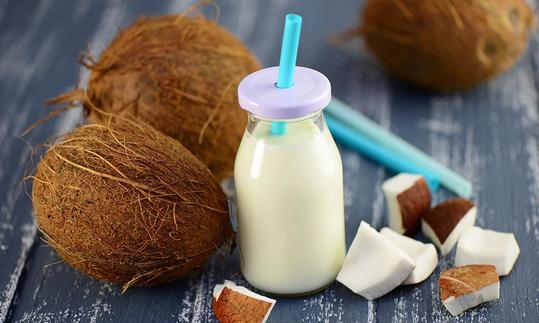

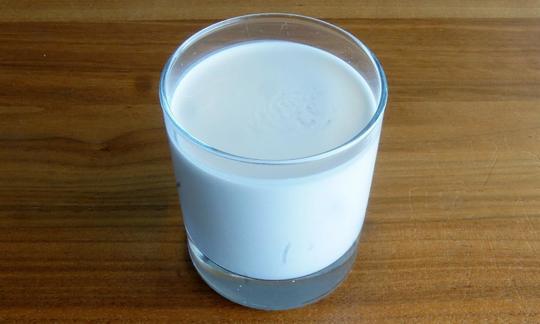

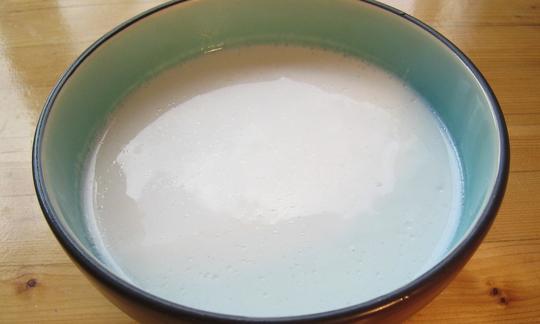

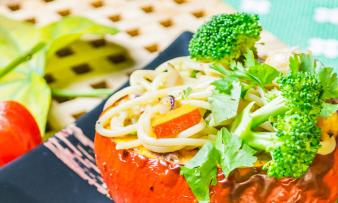
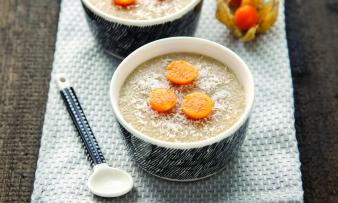
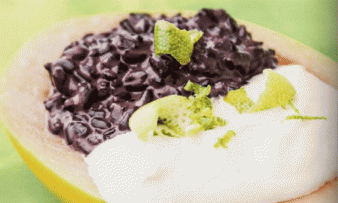


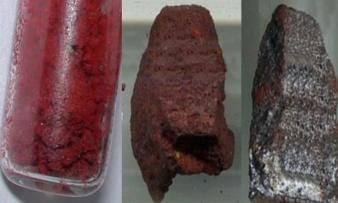


Comments